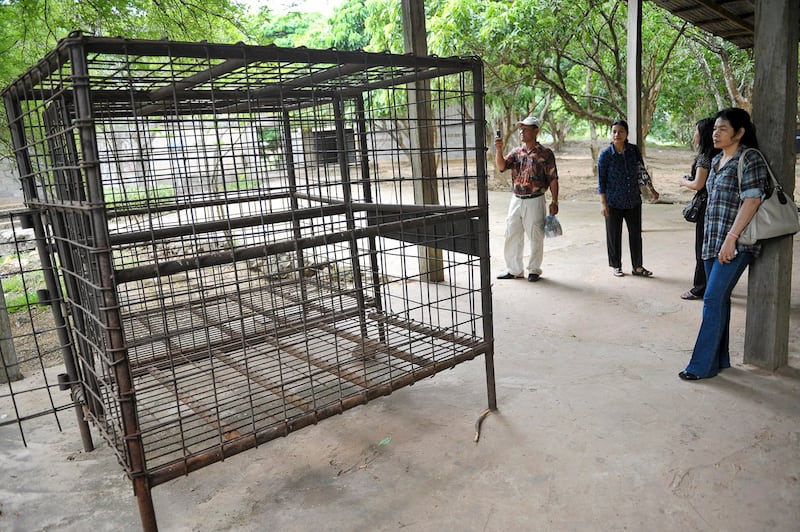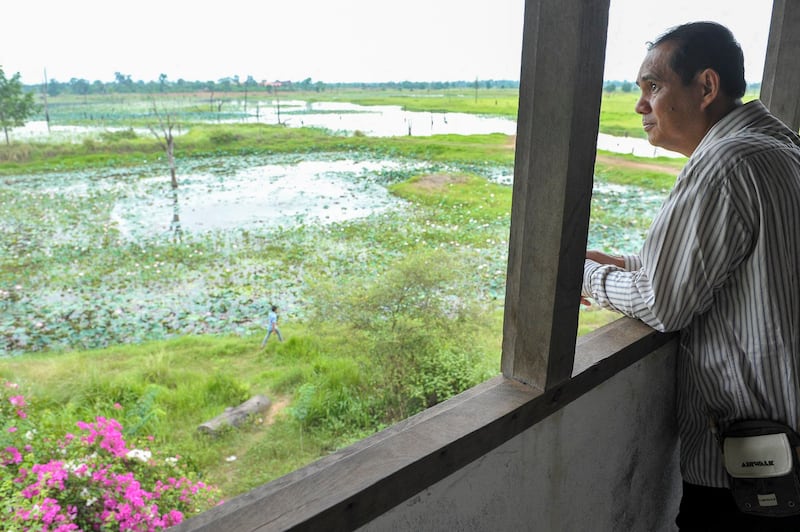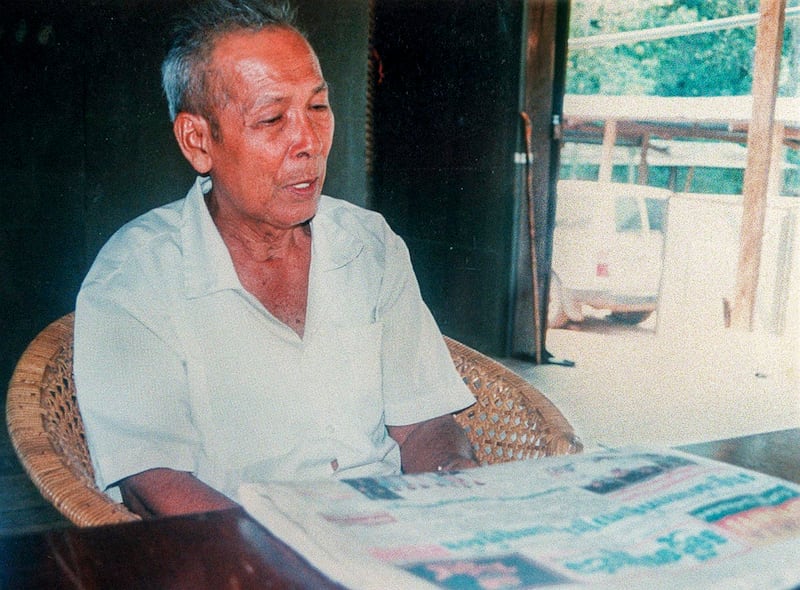Just a trickle of tourists now make their way to visit the rustic home of Ta Mok, a notorious Khmer Rouge military commander known as “the Butcher” who oversaw massacres during the genocide that gripped the country nearly 50 years ago, workers at the site say.
Located in the small town of Anlong Veng, just south of the Thai border and about a two-hour drive north of Siem Reap and its majestic temples, Ta Mok’s house had been promoted by tour guides as a day trip for Angkor tourists curious about the genocidal 1975-79 regime under which more than 1 million people died from starvation, overwork or mass executions.
Some used it as a stopover on the road to the even more remote Preah Vihear temple.

But over the past year, the tourist numbers to the house have dropped steadily, workers say.
“We don’t have many. We’ll have a few cars and maybe about 10 people” in a day, said Hang Ry, a ticket seller at the home. “I urge people to come to visit here but people just don’t have the money.”
Ta Mok died in 2006 after being captured in 1999, marking the end of the Khmer Rouge movement.
He was named the communist regime’s top military commander when it came to power in 1975, and came to be known as “Brother Number Five.” He earned a reputation as a ruthless enforcer and a director of massacres that killed tens of thousands of people.
After a Vietnamese-led invasion in 1979 drove the Khmer Rouge from power, Pol Pot and other top leaders fled to several pockets along the Thai border.
Lakeside house
Although there’s been an overall increase in visits to the town’s surrounding Oddar Meanchey province over the last year, fewer tourists have been interested in Anlong Veng’s historic Khmer Rouge locations, according to Thinny Monireaksmey, the director of the provincial Tourism Department.
“There are many Khmer Rouge historic sites that we need more time to work on,” she said. “But we don’t have the budget or aid to develop those places.”

The province doesn’t track the number of tourist visits, she said.
The two-story lakeside house – where Ta Mok often met with other Khmer Rouge commanders in the 1990s – features a mural of Angkor Wat, a map of Cambodia and two empty cages that a sign says were used to keep prisoners.
In past years, street vendors sold souvenirs and snacks outside the resort’s entrance. But almost all of the stands have been shut down over the last year.
Over the last year, the most consistent group of visitors have been curious students from nearby schools, according to Vun David, a cleaner at the Ta Mok home.
“Local tourists have declined,” he said. “Tour guides are taking people to different sites.”
RFA was unable to reach Ministry of Tourism spokesman Top Sopheak and Oddar Meanchey provincial Gov. Pen Kosal for comment.
Died in military prison
After being ousted by the Vietnamese, Ta Mok and other Khmer Rouge commanders continued to fight as insurgents through the 1980s and into the mid-1990s until a series of defections left Anlong Veng as the last territory under Khmer Rouge rule.
Ta Mok was captured by Cambodian troops in March 1999, almost a year after Pol Pot’s death.

The town at the base of the Dangrek mountain range was for years isolated from the rest of the country by thick forests and a lack of adequate roads.
But Ta Mok’s arrest and Cambodia’s return to peace after three decades of war and strife began attracting international tourists – primarily to Angkor Wat – as the government encouraged hotel construction and began building new roads or improving existing routes.
He was detained at the Military Prison in Phnom Penh awaiting trial by a unique tribunal created to hold Khmer Rouge leaders accountable and backed by the United Nations. The “hybrid court” operated according to Cambodian laws but was staffed by judges, prosecutors and others from a number of countries, in addition to Cambodians.
Tak Mok died in 2006 at a military hospital before he could be brought to trial.
Translated by Yun Samean. Edited by Matt Reed and Malcolm Foster.
